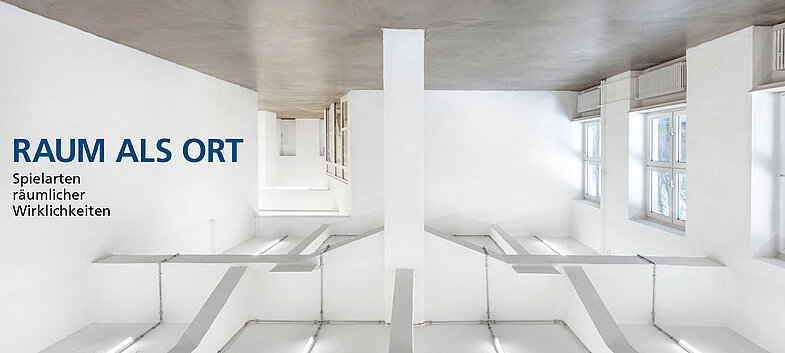
Drawings, paintings, sculptures, installations, films or animations need their own specific place that enables them to be effective. This time, Künstlerhaus Dortmund has invited artists to present works that distinctly address actual spatial qualities, in relation to where they are presented. They transform the ordinary surrounding space into a specific place. The space can be experienced as expanded or condensed, as relaxed or tense, as open or closed. Strangely enough, however, such mutually exclusive opposites are sometimes eliminated for our field of perception.
The pictorial space of a drawing or painting invariably interacts with the place where it is presented. This also applies to an autonomous three-dimensional object. Installations formed by physical elements are expansive per se, as are those that fill a room solely with artificial light or sound.
The actual exhibition space is then an equally important feature in how the work will be perceived. With video works or projected images, too, the question always arises as to the possibilities of their presentation. Should they push the actual space around them into the background, this way reducing its importance, or allow it to become a part of the work itself?
This proves to be a fine line between a merely appropriate exhibition design and a consciously artistic interweaving of reproduced and real space. The distribution and arrangement of the individual elements of a work, i.e. the respective positioning of the parts within a context, forms the foundation of an artistic display – even if it is also intended to address a specific context in terms of content.
For this group exhibition Space as Place, no theme was specified. Instead, it's about the extent to which the various works turn the usual exhibition space into a particular place – regardless of whether they clearly use artistic means to formulate socially relevant questions in the context of a critical engagement, or whether they are just formally focused on their own expressive quality to create a distinctive place for themselves.


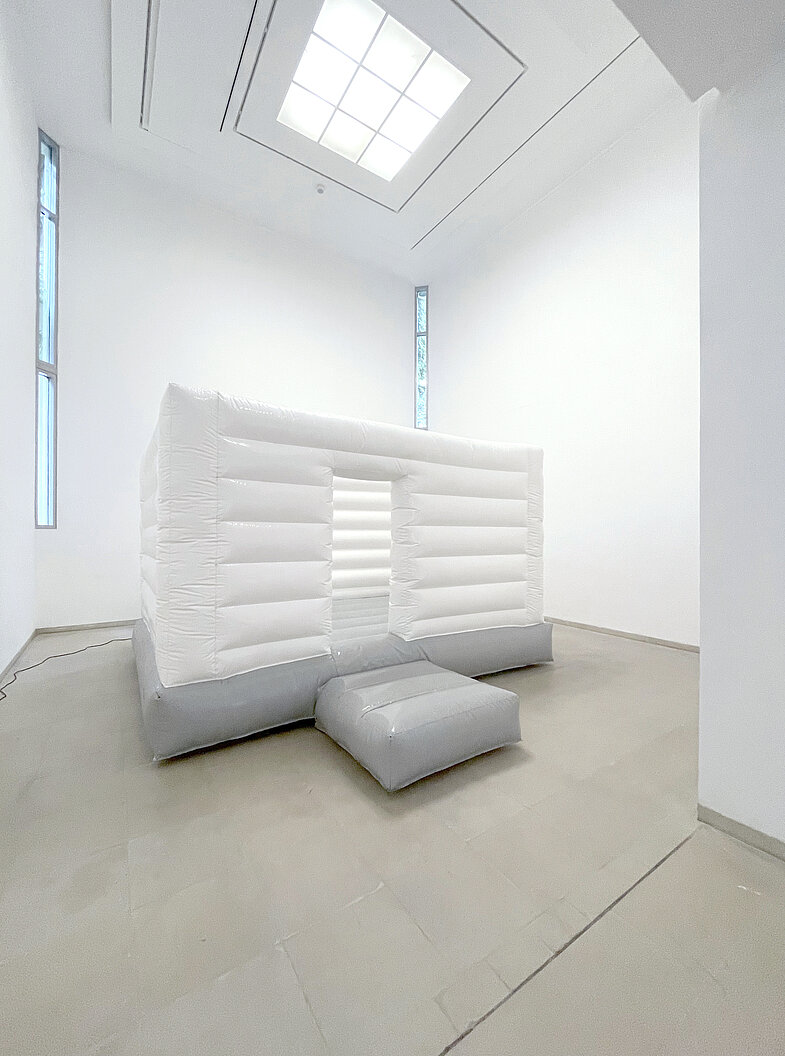
The works of Jonas Hohnke deal with everyday perception and the creation of pictures, shapes, and events in the urban as well as in the private sphere. The emphasis is on questioning the pictorial, sculptural as well and acoustic qualities of the things we encounter in our surroundings. In order to visualize them, individual elements of the environment are picked up and reduced to their essence, changed in their media, or transferred in different contexts. The use of the most diverse means and media systems from the inexhaustible pool of systems that the world has to offer. Basically, no medium is excluded in order to convey the possibilities and viewpoints of the perception and medial reception in general. However, Hohnke's works sensitize us to the poetics of everyday life.
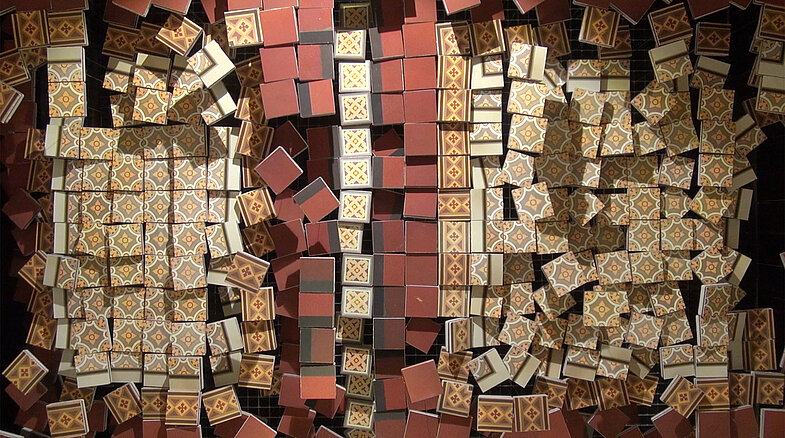
Individual tiles start to shake. The entire surface swerves, swings and wobbles, until it breaks. Its pattern is thrown into disorder. A gust of sand penetrates the surface. By lifting and lowering parts of itself irregularly, it ruptures itself. The sand, continuously drifting in, blurs the camera image, ultimately clouding it up beyond recognition. The movements were brought about by suspending the tiles on strings, individually and upside down in a box construction. The camera was located below the tile surface. Where on a solid tile surface would be a groove, here was a gap. The sand thus fell through the gaps from above through the apparent surface directly onto the camera.
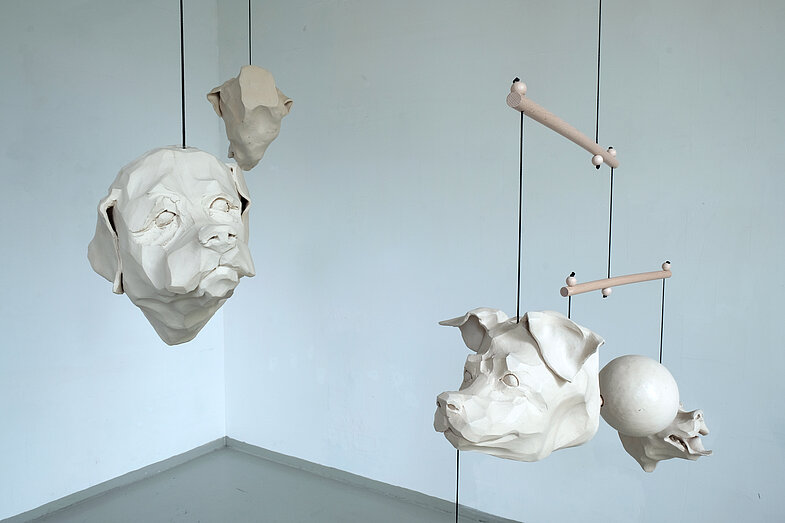
My works are of a narrative character, which originates in everyday life and everyday situations. In my perception, observations I make evolve into independent situations and stories for an artistic implementation. However, I am not interested in the directness of the narrative in the sense of an illustration, but in the complexity of an image, in the exaggeration of figures and the reorganization of their context. The mostly ceramic works are often supplemented and expanded through material combinations and the integration of different media and techniques.
In the context of an exhibition, the presence of the space is added to my work, which I integrate into the concept as 'artistic material'. The history of a room, spatial structures, also in relation to architectural features, the material pool of the architecture itself, etc., can be understood and added to the artwork as an active level of meaning.
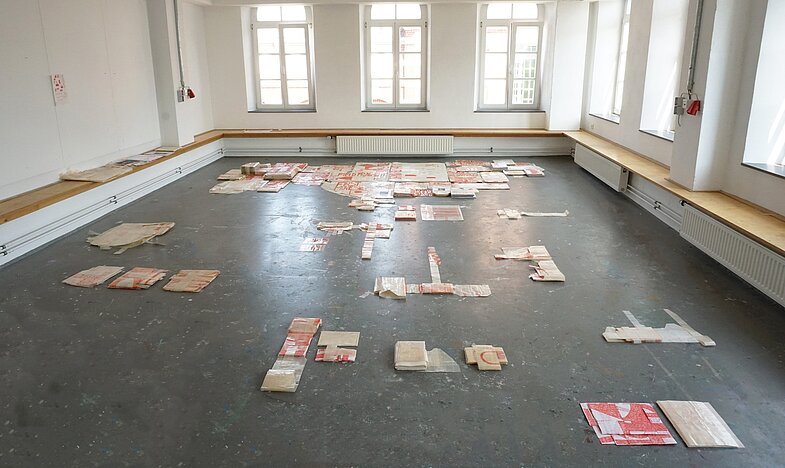
My work is defined by the constant attempt to explore and investigate the concept of space (Raum=Space=Field). I am interested in space as a temporary situation and dynamic, horizontal and mobile entity without vertical boundaries. I always try to reopen closed processes and keep them in a state of movement and transformation. My work is often reused, fragmented and cut or merges into something new over time. It is variable and subject to a permanent process of rethinking, questioning, ordering, reordering and rearranging. In drawing processes that use writing and language as material I reflect on the sculptural characteristics of body, space and movement, and analytically examine temporary spatial formations.
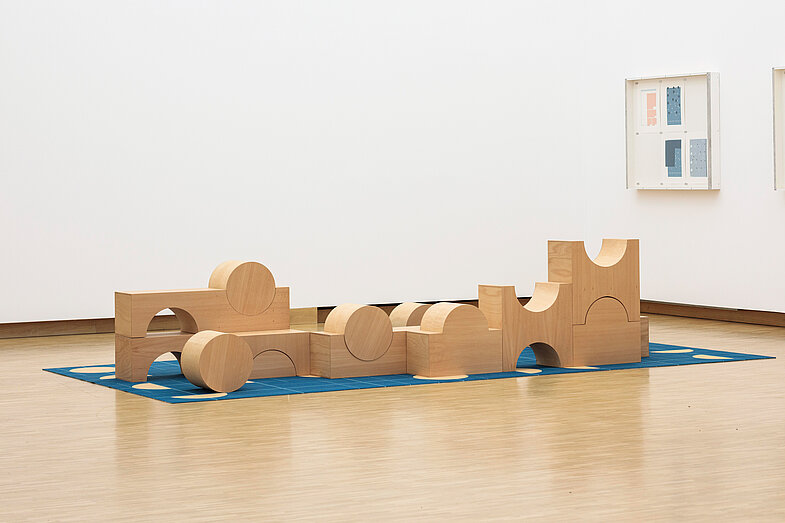
Charlotte Perrin's works deal with the relationship between materiality and form and often refer to spatial context. She consciously uses industrially manufactured and mass-produced materials that are characterized by functional and aesthetic aspects. She approaches their properties analytically and works them out into individual pieces using craftsmanship or mechanical processing techniques. To do this, Charlotte Perrin starts from elementary forms, which can be compared to both architectural structures and graphic designs. During the creative process, she consistently follows rules that she prescribes to herself. These rules give the formal character of her work a playful, almost mischievous dimension. In this way, she combines the intuitive with completely rational considerations and develops forms according to the material properties and/or in relation to the architecture and the context of the exhibition locations.
Charlotte Perrin studied at the École Nationale Supérieure d’Arts Paris-Cergy and at the Dresden University of Fine Arts under Prof. Monika Brandmeier. She lives and works in Wuppertal.
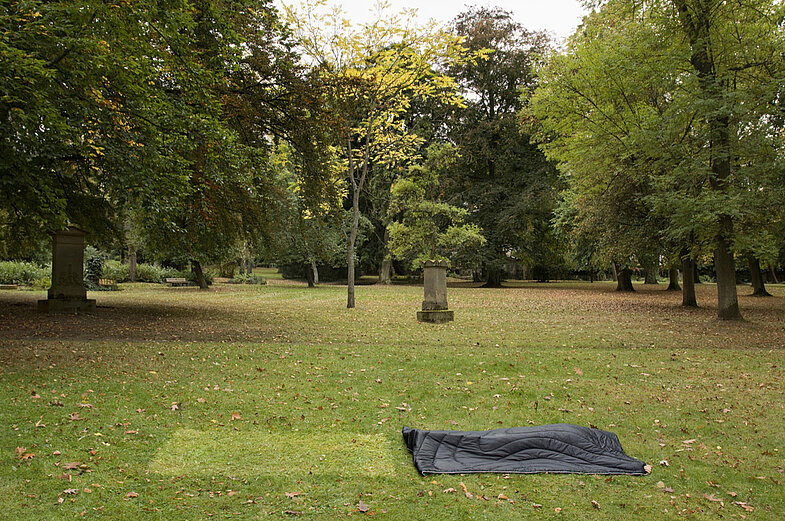
Ich arbeite genreübergreifend in verschiedenen Medien und Materialien mit den Schwerpunkten Installation, öffentlicher Raum, performative Handlung/Film und Zeichnung. Meinen Arbeiten liegt eine fortwährende Beschäftigung mit zentralen bildhauerischen Themen zugrunde, wie Körper und Raum, Masse und Proportion oder Bewegung und Statik. Sie loten das Verhältnis des Körpers zum Umraum in Objekten, Installationen und performativen Filmarbeiten aus. Architektur und Landschaft haben unmittelbaren Einfluss auf die überwiegend ortsbezogenen Installationen. Aspekte der Zeitlichkeit, die sich beispielsweise im Verdunsten des Wassers oder in der Schattenwanderung über einen Tagesverlauf hinweg zeigen, werden in Filmarbeiten verhandelt. Zeit und Raum, Licht und Schatten, Bewegung und Schwerkraft spielen eine immer neue Rolle. Die Arbeiten sind geprägt von einer hohen Aufmerksamkeit für die physischen Eigenschaften des Raumes sowie für ephemere Vorgänge.
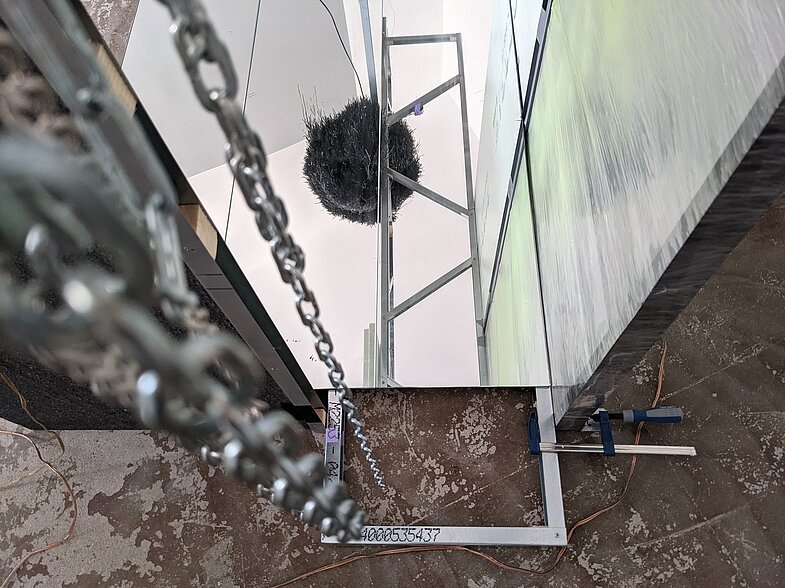
Nicola Schudy works with a focus on installation, object and drawing. Her mostly site-specific installations refer to the atmospheric spatial experience as well as to historical, functional and architectural features of the respective surroundings, thus weaving a narrative web to the respective situation.
As a sound researcher and musician, Thilo Schölpen is primarily at home in experimental music and improvisation. He performs in various ensembles and as a soloist, focusing on electroacoustics, acousmatics and the invention of sound possibilities.
Since 2020, they have been experimenting as a duo with a combination of sound and sculpture and developing site-specific installations that they perform. The materials of the sculptures are transformed into resonance surfaces by means of electronic playback - the sounds merge with the installation to create a three-dimensional sound event.
A four-channel sound installation developed for the premises of the Dortmunder Künstlerhaus, which will be played live in a sound concert at the opening.
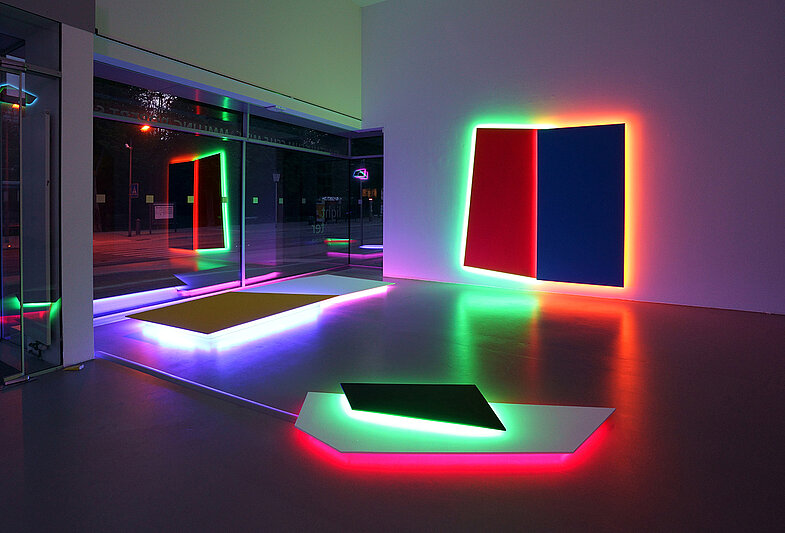
"In her light installations, Yoana Tuzharova explores the boundaries and perception of color, light, and space. Tuzharova's overlay of surfaces in the image references a sculptural approach, while the monochromatic color surfaces and colored light in her installations retain a painterly character. The abstract works are characterized in their basic form by geometric shapes; these are determined by solid edges, concrete structure, and painted surfaces. She places mostly colored light around these overlapping colored surfaces, which outlines these hard forms. Almost aura-like, the light expands the artwork into the space, not only dissolving the solid lines at the points of intersection but also creating new colors through the blending of soft light reflections and colored pigment layers. Moreover, the boundaries between the substrate and the artwork are dissolved because the light's glow extends the work onto the wall surface, making it an expansive part of the environment.
...The works are also marked by contrasts. The soft light contrasts with the concrete structures, and in the color scheme, Yoana often juxtaposes complementary colors, using her sensitive composition to cohesively set these contrasts in context. Particularly in the diminished influence of daylight, it becomes evident how much the works interact with each other and how their appearance is altered by the effect of the others." (Felipe Dietrich)
6 April - 19 May 2024
Opening
Friday, 5 April, 7 pm
Artists:
Jonas Hohnke
Suse Itzel
Anne Kückelhaus
Nico Pachali
Charlotte Perrin
Hannah Schneider
Nicola Schudy & Thilo Schölpen
Yoana Tuzharova
Curators:
Willi Otremba, Elly Valk-Verheijen
Images works: © the artists
Title graphic: © Viola Dessin
Images opening: © JS/Künstlerhaus Dortmund
Kindly supported by: Kulturbüro Dortmund
Cooperation partner: Ruhr Museum
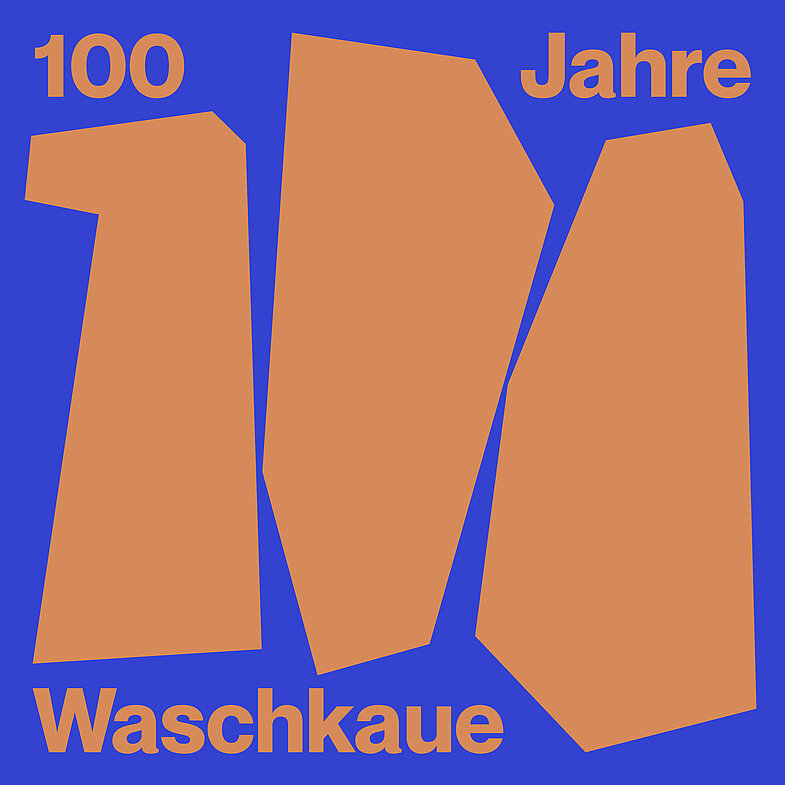
Space as Place is the second of three anniversary exhibitions to mark the 100th birthday of the Künstlerhaus Dortmund. The building was constructed in 1924 as a washhouse ("Waschkaue") and operations building for Schacht Westfalia and was later used as an office building for Westfälische Wohnstätten AG, as the administrative headquarters of Deutsche Edelstahlwerke and most recently by the University of Applied Sciences and Arts for Design.
Students from this school occupied the building and fought for its current status, self-administration. In 1987, the Künstlerhaus was renovated and converted with funds from the state of North Rhine-Westphalia, the city of Dortmund and Sparkasse Dortmund. As part of the anniversary exhibitions, there will be a program with actors from the history of the house.